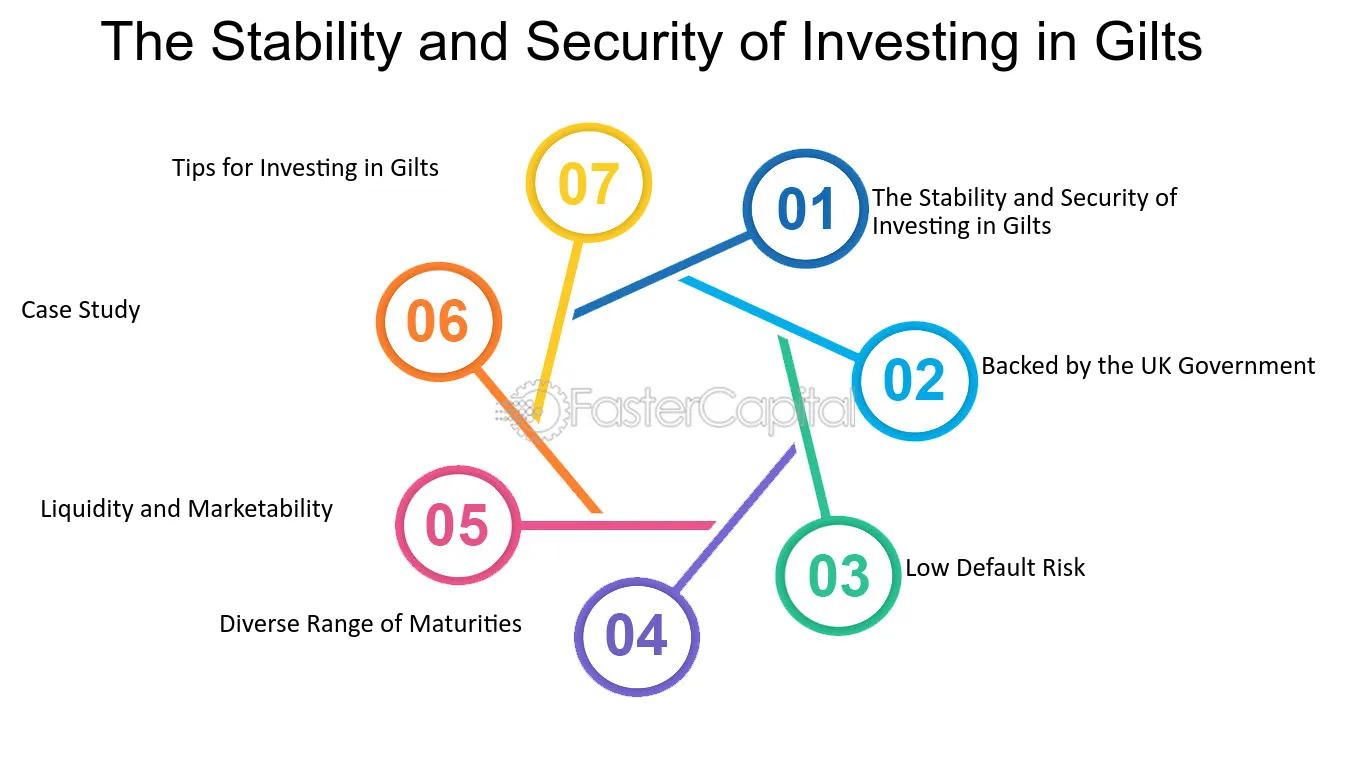Gilts: Types and How to Invest
Types of Gilts
There are several types of gilts available for investors:
| Type | Description |
|---|---|
| Conventional Gilts | These are the most common type of gilts. They pay a fixed rate of interest twice a year and return the face value of the bond at maturity. |
| Index-Linked Gilts | These gilts are linked to inflation, which means that the interest payments and the face value of the bond are adjusted for inflation. |
| Undated Gilts | Unlike conventional gilts, undated gilts have no maturity date. They pay a fixed rate of interest indefinitely. |
| Strips | Strips are created by separating the interest payments and the face value of a gilt into separate securities. They can be useful for investors who want to customize their cash flow. |
How to Invest in Gilts
Investing in gilts can be done through various channels:
- Directly from the UK Debt Management Office (DMO): The DMO is responsible for issuing and managing gilts on behalf of the UK government. Investors can buy gilts directly from the DMO through their website or by contacting them directly.
- Through a broker: Many brokers offer gilts as part of their investment offerings. They can assist you in buying and selling gilts on the secondary market.
- Gilt funds: Another option is to invest in gilt funds, which are mutual funds that invest in a diversified portfolio of gilts. This can be a convenient way for smaller investors to gain exposure to gilts.
Gilts are issued by the government to finance its budget deficit or to fund various projects. They are backed by the full faith and credit of the government, which means that the government is obligated to repay the bondholders. This makes gilts a low-risk investment option compared to other types of bonds.
One of the key features of gilts is their maturity period. They can have short-term, medium-term, or long-term maturity periods, ranging from a few months to several decades. The maturity period determines the duration for which you will be invested in the gilt and the interest rate you will receive.
Investing in gilts can be done through various channels, including government auctions, primary market offerings, and secondary market trading. It is important to research and understand the different types of gilts available, their features, and the risks associated with them before making an investment decision.
Types of Gilts

1. Conventional Gilts:
2. Index-Linked Gilts:
3. Floating Rate Gilts:
4. Undated Gilts:
5. Stripped Gilts:
Stripped gilts are created by separating the interest payments from the principal amount of a conventional gilt. The interest payments and the principal are then sold as separate securities. This allows investors to trade the interest payments and the principal separately, providing more flexibility in managing their investments.
Investing in Gilts
Here are some key points to consider when investing in gilts:
1. Understand the Types of Gilts:
There are different types of gilts available for investment, including conventional gilts, index-linked gilts, and floating rate gilts. Conventional gilts pay a fixed rate of interest, while index-linked gilts provide returns that are linked to inflation. Floating rate gilts have a variable interest rate that adjusts periodically.
2. Assess the Risk and Return:
Before investing in gilts, it is important to assess the risk and return associated with each type of gilt. Conventional gilts are considered to be low-risk investments, while index-linked gilts offer protection against inflation. Floating rate gilts may provide higher returns but also come with higher risk.
3. Diversify Your Portfolio:
Investing in gilts can be a part of a diversified investment portfolio. By spreading your investments across different asset classes, including stocks, bonds, and gilts, you can reduce the overall risk and potentially increase returns.
4. Consider the Yield and Maturity:
When investing in gilts, it is important to consider the yield and maturity of the bonds. The yield represents the annual return on investment, while the maturity indicates the length of time until the bond matures. Higher yields may indicate higher risk, and longer maturities may offer higher returns but also come with increased uncertainty.
5. Monitor Market Conditions:
Keep an eye on market conditions and interest rates when investing in gilts. Changes in interest rates can affect the value of gilts, so it is important to stay informed and make adjustments to your investment strategy if necessary.

Emily Bibb simplifies finance through bestselling books and articles, bridging complex concepts for everyday understanding. Engaging audiences via social media, she shares insights for financial success. Active in seminars and philanthropy, Bibb aims to create a more financially informed society, driven by her passion for empowering others.
